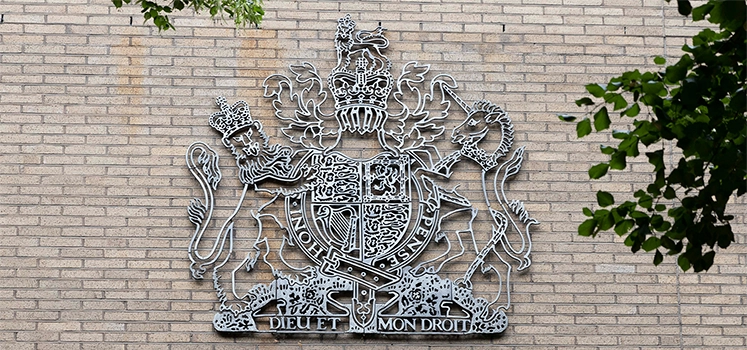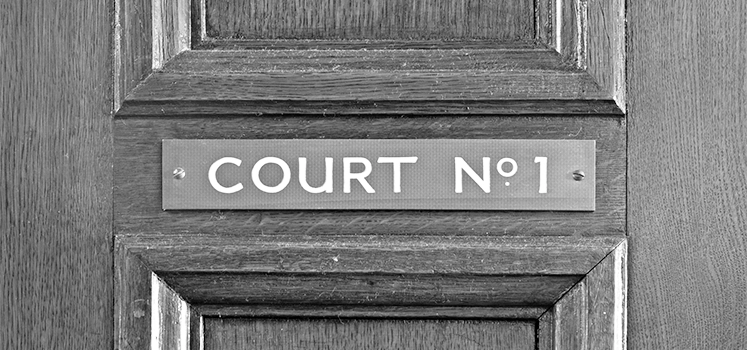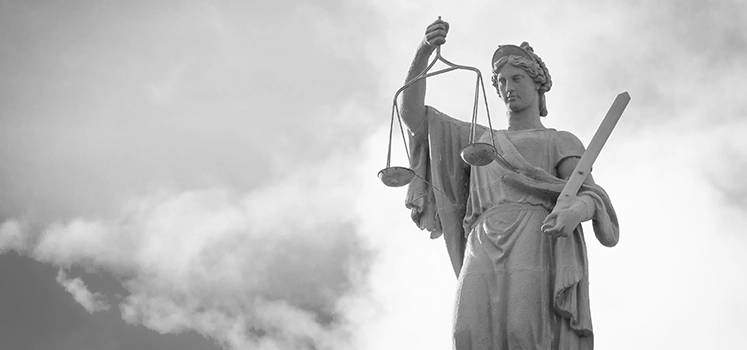Close Protection for High-Profile Clients in Court
by Alex Bomberg | 29th September 2025

What is the best approach for High-Profile clients using bodyguards for Crown Court appearances?
The provision of close protection for high-profile clients attending Crown Court is one of the more complex and delicate operations within the security industry. It combines all of the technical requirements of traditional close protection, risk assessment, secure transportation, protective surveillance, and emergency planning, with a uniquely sensitive environment: the courts of law.
Unlike corporate boardrooms or private estates, the courtroom is a public space and, in many cases, the trial itself is a matter of media fascination. High-profile trials attract journalists, protesters, campaigners, and members of the public with vested interests, all of whom converge on the court buildings. In such an atmosphere, the very presence of private security can either reassure or inflame, depending on how it is presented.
For those of us tasked with protecting principals in this setting, the challenge is therefore twofold: first, to deliver safety, privacy, and efficiency; and second, to do so without damaging the client’s reputation or creating an impression of heavy-handedness. In British culture, where understatement and discretion are valued, this balance is especially important.
This article will explore the operational considerations of providing close protection for high-profile clients attending court, the reputational issues inherent in such work, and the essential logistics that underpin a safe, discreet, and effective operation.
The Optics of Security in a Public Trial
When a high-profile figure attends court, whether they are a celebrity, a business executive, or a political personality, they are already under intense public scrutiny. Every movement, every facial expression, and every detail of their appearance is photographed, analysed, and reported. The arrival and departure at court are often replayed on television and dissected across social media.
Against this backdrop, the role of private security is not simply to protect the client from physical threats but to manage the optics of protection. Security must be present, but not ostentatious; effective, but not oppressive.
The risks of mismanagement are significant:
Reputational damage: An entourage of large, visibly armed men muscling their way through crowds may give the impression that the client is above the law, fearful of the public, or even trying to intimidate witnesses and journalists. This plays badly in the press and can impact public perception of the trial itself. Private security and the best legal team in the land, may also present the optic that the accused is trying to buy themselves out of the situation.
Judicial sensitivities: Courts in the United Kingdom are rightly sensitive to any appearance of interference or undue influence. Heavy-handed security can be seen as disrespectful to the process and may even attract judicial criticism.
Hostile narrative: In some cases, particularly where the client faces criminal allegations, overt security may be portrayed as an admission of guilt or as a cynical attempt to stage-manage appearances.
The guiding principle, therefore, must be low-key professionalism. Security should blend into the background, offering protection without becoming the story, hence why covery protection is also often used to give additional protection during high-profile court trials.
The Case for Low-Key Protection
Low-key protection does not mean inadequate protection. Rather, it means carefully calibrating the presentation of security to match the environment and the risks.
In practice, this often involves:
Plain-clothes operatives: Close protection officers (CPOs) dressed in smart business attire, indistinguishable from solicitors or corporate colleagues. The goal is to integrate seamlessly into the court-going entourage, and not to draw undeue attention.
Tactful positioning: CPOs must maintain protective positions without forming visible barriers. Subtlety in body language and movement is vital.
Communication discipline: The use of earpieces and radios (where possible) must be discreet, with minimal chatter and no visible equipment. Some courts may not permit Radios being used on their property, or being brough into the building.
Professional demeanour: Security staff must be courteous to journalists, court officials, and even protesters. Professionalism defuses tension and prevents escalation.
By adopting these measures, protection teams ensure that the client is safe while preserving the dignity of the court process and minimising reputational fallout.

The Role of Secure Transportation
Transport is often the most critical element of court-related close protection. Crown Courts are usually in busy city centres, with narrow streets, limited parking, and dense foot traffic. This creates opportunities for media ambushes, protest groups, or even hostile individuals.
A professional driver and a well-planned vehicle strategy are essential. The driver is not just a chauffeur but an integral part of the security team, responsible for planning routes, anticipating disruptions, and positioning the vehicle for swift, discreet arrivals and departures. Their ability to communicate with the close protection team and react calmly under pressure can significantly reduce risk, particularly during the vulnerable moments of entering or exiting the vehicle.
Every Crown court presents unique logistical challenges. Some have secure side or staff entrances; others require all parties to use the main door. Advance reconnaissance is vital to identify suitable drop-off points, holding areas, and emergency exit routes, and to coordinate with court security staff.
Arrival and departure require particular care, as they are the most visible moments of the day. The vehicle should be positioned as close as possible to the entrance, with security maintaining a discreet but effective protective presence. Media interaction, if planned, should be managed in a controlled way. On departure, tensions can run higher, so timing, positioning, and the ability to activate alternative routes quickly become crucial.
Transportation planning is not just about logistics. It underpins the entire security operation, ensuring the client can move safely, efficiently, and without unnecessary attention.
Operational Considerations Beyond Transport
While transportation and court access are central, a comprehensive close protection plan must also consider:
Advance security: Sending a team ahead to assess the situation at court on the morning of the hearing is vital, it is really imprtant to understand the situation and what they are arriving to.
Protective surveillance: Monitoring crowds for suspicious behaviour, particularly individuals attempting to follow the client.
Inside court: While private security has no jurisdiction within the courtroom itself, CPOs must manage entry, seating, and coordination with solicitors, ensuring the client feels secure. The likelihood is, that they will only be able to operate in public areas and most definitely not in the Court Room itself.
Media management: Working alongside public relations advisers to manage optics. For example, deciding whether security should escort the client to the steps of the court and then retreat out of shot.
Personal welfare: Ensuring the client has access to private space for breaks, food, and preparation – important for both safety and peace of mind.
The Human Element
Beyond logistics and planning, it is vital to remember that Crown court appearances are deeply stressful for clients. The stakes may be high, financial, professional, or personal. In this context, the role of security is also psychological: to provide reassurance, to create a sense of control, and to allow the client to focus on legal proceedings rather than personal safety.
Discretion, empathy, and professionalism are therefore as important as tactical skill. A security officer who is calm and understated offers far more value than one who is visibly aggressive or domineering.
Working with Stakeholders
Court security is not delivered in isolation. Effective protection requires coordination with multiple stakeholders:
Court officials and security staff: Cooperation is essential, and private teams must respect the authority of court security and liaise with them where possible. Its important to discuss with them about any communications devices such as radios, as these may not be allowed in the building.
Solicitors and barristers: Legal teams require punctuality and calm; security must never become a distraction.
Police: In some high-profile cases, police may provide crowd control. Private security must liaise effectively without overstepping boundaries.
Public relations advisers: Optics are crucial; security should align with the broader strategy of message management.
This cooperative approach ensures that security is integrated, not intrusive.
Case Study Examples (Hypothetical)
The Business Executive: A CEO facing regulatory proceedings arrives at a London court. His team opts for a low-key strategy: two CPOs in suits, one professional driver, and no obvious security presence inside court. The operation runs smoothly; the media coverage focuses on the trial rather than his security detail.
The Celebrity Defendant: An actress accused in a civil case is confronted by large crowds of paparazzi. Her security team uses protective driving and a carefully timed arrival, with CPOs managing a short walk to the court entrance. A small space is created for her to make a statement before entering, avoiding confrontation while still engaging with the press.
These examples illustrate how tailored planning delivers both safety and reputational benefits.
Conclusion
Providing close protection for high-profile clients attending court is among the most demanding assignments in the security field. It requires a mastery of logistics, a sensitivity to optics, and a commitment to discretion.
The guiding principle is clear: protection must be robust but invisible. It must shield without intimidating, and it must allow the judicial process to proceed without interference. The professional driver, the careful planning of drop-off points, the seamless cooperation with court officials, and the low-key professionalism of the protection team all combine to achieve this delicate balance.
Ultimately, the measure of success in this context is not dramatic intervention but quiet efficiency. The client attends court safely, the trial proceeds undisturbed, and the public narrative remains focused on the legal process rather than the security arrangements.
As with so much in British close protection, understatement is the hallmark of excellence.
Do you require our services for attending court?
If you require our services for attending court, please get in touch with our team who will be able to assist you with your needs.
Our team can be contacted via email [email protected] or telephone: +44 1453 791444.
